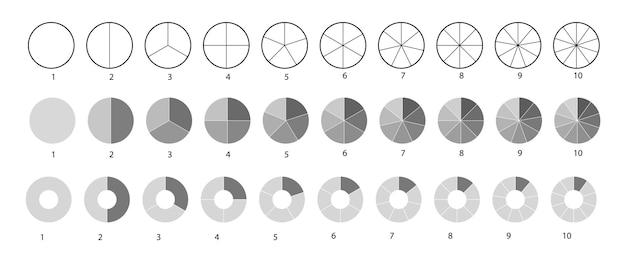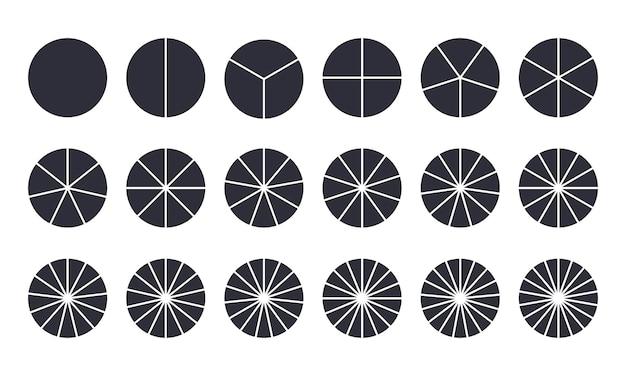Have you been looking for a way to optimize your CRM but don’t know where to start? Look no further! With Segment Tableau integration, you can unlock insights that will elevate your CRM to the next level.
In case you’re new to Tableau, it’s a powerful business intelligence tool that allows you to visualize and analyze data from a variety of sources. And Segment is a customer data platform that helps you collect, clean, and unify data from different sources into a single source of truth. When these two tools are brought together, magic happens.
In this blog post, we’ll explore what a segment in Tableau is and how to utilize it to segment your CRM data effectively. We’ll also dive into RFM Tableau analysis, Tableau connectors and integrations, and how to integrate Tableau with Salesforce.
Ready to take your CRM to the next level? Let’s dive in!
Segmentation in Tableau: Breaking down Data for Better Insights
Tableau is a powerful tool for data visualization, but it becomes even more powerful when you take advantage of its segmentation capabilities. segmentation in Tableau allows you to break down your data into smaller, more specific categories so you can get a better understanding of what’s going on. Here are a few tips for using segmentation in Tableau to generate better insights.
Start by Identifying Your Variable of Interest
Segmentation can work for many different types of data, but the first step is always identifying what you’re interested in breaking down. This could be anything from revenue by product line to website traffic by location. Once you have identified your variable of interest, you can start to build your segmentation strategy.
Use Dimensions to Segment Data
One of the easiest ways to segment data in Tableau is by using dimensions. Dimensions are categorical variables, such as product categories, time, or locations. They can all be used to slice your data up into smaller groups and analyze the results. To segment by dimension, drag the dimension you want to use onto the “Rows” or “Columns” shelf.
Leverage Measure Values to Segment Data
If you’re interested in segmenting data based on numerical values, you can use measure values in Tableau. Measure values allow you to look at different aggregations of a given metric across different segments. This means you could, for example, segment revenue by customer segment and look at the average revenue per customer in each segment.
Combine Segments to Find Patterns
Sometimes, it can be useful to combine different segments to look for meaningful patterns. Crosstabs and heat maps are both great ways to visualize how different segments interact with each other. You can also create calculated fields to look at the difference between two different segments, such as the difference in revenue between two product lines.
By using segmentation in Tableau, you can gain a deep understanding of your data. By dividing it up into smaller categories, you can get insights that you might otherwise miss. Best of all, Tableau makes it easy to experiment with segmentation strategies and find the approach that works best for your data.
Segmenting Data with Tableau’s CRM Tools
While Tableau is often thought of as a data visualization tool, it also offers powerful tools for segmenting and analyzing customer relationship management (CRM) data. With these features, businesses can gain a deeper understanding of their customers and optimize their marketing, sales, and customer service strategies.
Understanding Segmentation in CRM
Before we dive into the specifics of Tableau’s CRM tools, it’s important to have a basic understanding of what segmentation is and why it matters. In short, segmentation is the process of dividing a customer base into groups that share similar behaviors or characteristics. By doing so, businesses can tailor their approaches to each segment, increasing the effectiveness of their marketing and sales efforts.
Some common ways to segment a customer base include demographics (e.g. age, income, location), psychographics (e.g. personality, values, attitudes), and behavior (e.g. purchase history, website interactions).
Segmenting CRM Data in Tableau
Tableau offers several features that make it easy to segment and analyze CRM data. One of the most powerful is the ability to create custom segments using calculated fields. With this feature, you can create complex rules to group customers based on any combination of attributes or behaviors.
For example, you might create a segment of customers who have made a purchase in the last month and have a high lifetime value. Or you might segment customers based on their likelihood to churn, using data on past behavior and customer sentiment.
Tableau also offers a number of pre-built segmentation templates, which can be a useful starting point for businesses that are new to CRM analysis. These templates include segments based on recency, frequency, and monetary value (RFM), as well as customer lifetime value (CLV).
Using CRM Segmentation to Drive Results
Once you’ve segmented your CRM data in Tableau, you can use the insights you gain to tweak your marketing and sales strategies. For example, you might identify a segment of high-value customers who tend to make large purchases offline. With this information, you could develop targeted direct mail campaigns or run in-store promotions to drive more sales from this segment.
Or you might discover a segment of customers who have high engagement on your website but tend not to make purchases. With this information, you could experiment with different website layouts or product offerings to see if you can convert more of these customers into buyers.
Segmenting CRM data is an essential tool for any business looking to optimize its marketing and sales strategies. With Tableau’s powerful CRM tools, it’s easier than ever to gain deep insights into your customer base and develop effective segmentation strategies. By using these insights to drive targeted marketing and sales efforts, businesses can boost revenue, enhance customer satisfaction, and stay ahead of the competition.
RFM Analysis in Tableau
RFM analysis is a powerful technique used by businesses to segment customers based on their purchasing behavior. It enables businesses to identify high-value customers and improve their marketing strategies. Tableau, a popular data visualization tool, offers powerful features for RFM analysis, making it easier for businesses to gain insights into customer behavior. In this section, we’ll discuss how Tableau can be used for RFM analysis and how it can help businesses make informed decisions.
What is RFM Analysis
RFM analysis is a customer segmentation technique that stands for Recency, Frequency, and Monetary. It is based on the idea that customers who have recently made a purchase, frequently purchase, and spend more are more loyal and valuable to the business. RFM analysis assigns scores to these three metrics based on customer behavior and segments them into groups. The resulting segments enable businesses to identify which customers are most valuable and tailor their marketing strategies to improve customer retention and increase revenue.
How to Perform RFM Analysis in Tableau
Performing RFM analysis in Tableau involves the following steps:
- Import data – Bring the customer transaction data into Tableau.
- Calculate RFM scores – Calculate the Recency, Frequency, and Monetary scores for each customer.
- Normalize the scores – Scale the scores to a range of 1 to 100 to make them comparable across customers.
- Segment customers – Group customers based on their RFM scores and assign labels to each segment.
- Visualize the segments – Create a visual representation of the segments to gain insights into customer behavior.
Tableau offers a range of tools and features to perform these tasks. Using drag-and-drop interface, businesses can quickly create rich visualizations and explore customer segments.
Benefits of RFM Analysis in Tableau
Using Tableau for RFM analysis offers several benefits:
- Visualize customer behavior – Tableau enables businesses to visualize customer behavior and identify patterns in their purchasing habits.
- Segment customers – RFM analysis in Tableau allows businesses to segment customers into groups based on their behavior, making it easier to target marketing efforts.
- Improve customer engagement – By identifying high-value customers, businesses can focus on improving their engagement and loyalty.
- Increase revenue – By optimizing marketing strategies for different customer segments, businesses can increase revenue.
Overall, Tableau is a great tool for businesses looking to perform RFM analysis and gain insights into customer behavior. With its intuitive interface and powerful features, businesses can quickly and easily visualize customer segments and make informed decisions.
Segment Apps: A Comprehensive Review
Are you looking for an innovative way to manage your customer data? Do you want to track customer behavior and increase conversion rates? Then, Segment apps might be the solution you need. In this section, we will discuss the benefits of using Segment apps, how they work, and the different types of apps available.
Benefits of Using Segment Apps
Segment apps help you collect and manage customer data from different sources and send it to various tools. Instead of manually updating customer profiles in multiple tools, Segment apps automatically sync your data with your preferred tools. This eliminates the need for data migration or manual updates, saving you time and reducing the risk of data errors.
How Do Segment Apps Work
Segment apps use a JavaScript library to track customer interactions on your website or mobile app. When a user performs a specific action (such as signing up, adding to a cart, or clicking a button), the app sends this data to Segment, which then forwards it to your configured tools. This allows you to analyze customer behavior and create personalized experiences for your users.
Types of Segment Apps
Segment offers a range of apps to help you manage your data effectively. These include:
- Analytics: Help you analyze user behavior and track conversions.
- Email: Automate your email campaigns and send personalized messages.
- Advertising: Use customer data to create targeted ads and increase ROI.
- Customer Success: Manage customer feedback, support requests, and account management.
- Data Warehouses: Collect and store customer data in a single location.
Segment apps offer a comprehensive way to manage customer data and improve your overall customer experience. From tracking user behavior to automating campaigns, Segment apps have something for every business. So, why wait? Try Segment apps today and see the difference they can make for your business.
Tableau Connectors
Tableau is an interactive data visualization tool that can help businesses analyze their data easily. But where Tableau truly shines is in its ability to connect to various types of data sources. In this section, we’ll talk about Tableau connectors, what they are, and how they work.
What Are Tableau Connectors
Tableau connectors are tools that allow you to connect to various data sources from within Tableau. By using connectors, you can import data into your workbook from sources such as Excel, CSV files, or various databases, and then visualize that data in Tableau.
How Do Tableau Connectors Work
Tableau works by using a data engine that connects to various data sources. When you create a connection in Tableau, it uses a connector to communicate with the data source and retrieve the information you need. The connector acts as the intermediary, translating the data into a format that Tableau can use to create your visualization.
Types of Tableau Connectors
Tableau offers a variety of connectors that allow you to connect to different data sources. Some of the most popular connectors include:
- Excel Connector: Allows you to connect to Excel spreadsheets.
- Text File Connector: Allows you to connect to text files, such as CSV or TSV files.
- Google Analytics Connector: Lets you access data from Google Analytics.
- MySQL Connector: Allows you to connect to MySQL databases.
- Salesforce Connector: Lets you access data from Salesforce.
- Amazon Redshift Connector: Enables you to connect to Amazon Redshift databases.
Creating Connections in Tableau
To create a connection in Tableau, you’ll need to use one of the available connectors. Once you’ve selected a connector, you’ll be prompted to provide the necessary information such as server name, login credentials, and so on. Once the connection is established, you can import data and start visualizing.
In conclusion, Tableau connectors are a critical part of the Tableau ecosystem. They enable you to connect to various data sources and analyze your data efficiently. By understanding how Tableau connectors work and the types of connectors available, you can streamline your data analysis process and get more out of Tableau.
Segment Integrations
If you’re a data-driven business, you know how important it is to have a comprehensive view of your data. That’s why many businesses rely on business intelligence tools like Tableau to help them gain insights into their data. But what makes Tableau stand out from other business intelligence tools is its ability to integrate with other data sources and tools.
Integrating with Segment
One of the ways Tableau integrates with other tools is through Segment. Segment is a customer data platform that collects customer data from various sources, such as your website and mobile app, and sends it to other tools like Tableau. This integration enables businesses to create more comprehensive reports that include customer data from various sources.
How it Works
To integrate Tableau with Segment, you need to set up a data source in Tableau that connects to Segment. You can then use this data source to create reports that include data from Segment.
One of the benefits of this integration is that it allows you to create more customized reports. For example, you can combine data from your website and mobile app to get a more comprehensive view of your customer behavior. You can also use this integration to create reports that track the effectiveness of your marketing campaigns across various channels.
Integrating Tableau with Segment can take your data analysis to the next level. With this integration, you can create more comprehensive reports that include customer data from various sources. This allows you to gain a better understanding of your customers and make more informed business decisions.
Tableau Customer Analysis
If you’re a marketer or business owner, you know that keeping track of your customers’ behavior is essential for staying ahead of the competition. That’s where Tableau comes in handy! This powerful data visualization tool can help you gain insights into your customers and what they want.
What is Tableau
Tableau is a data visualization tool that allows you to connect to various data sources and create interactive graphs, charts, and dashboards. The software is user-friendly and doesn’t require any specialized technical skills, making it a popular tool for both beginners and experts.
Why is customer analysis important
Customer analysis is essential because it helps businesses understand their customers’ behavior, needs, and preferences. By gathering and analyzing customer data, businesses can make informed decisions about their marketing strategies, product development, and customer service.
How can Tableau help with customer analysis
Tableau can help with customer analysis by allowing you to create visualizations that highlight customer behavior patterns, preferences, and trends. You can use the software to track customer engagement across different channels, such as social media, email, and website interactions. You can even segment your customers based on criteria like demographics, purchasing behavior, and location.
What are some practical use cases of Tableau for customer analysis
Businesses can use Tableau for customer analysis in several ways. For example, they can use the software to identify the most profitable customer segments, enhance their customer retention strategies, and uncover upsell and cross-sell opportunities. Tableau can also help businesses track customer feedback and sentiment, which can be valuable for improving customer satisfaction.
Tableau is an excellent tool for businesses looking to gain insights into their customers. By leveraging the software’s capabilities, marketers and business owners can stay ahead of the competition and make data-driven decisions that lead to business success.
Impact of Segment Integration in Tableau
Segment integration in Tableau has a significant impact on data visualization, reporting, and analysis. This feature allows you to import data easily from Segment into Tableau, make necessary transformations, and analyze it to gain insights that can help drive your business forward. In this section of our blog, we’ll discuss the benefits of this integration and how it can help improve your data-driven decision-making process.
Improved Accuracy in Data Analysis
Data accuracy is essential to producing reliable information for decision-making. By integrating Segment into Tableau, you can guarantee that your data is accurate and up-to-date. This is because Tableau can connect to Segment, the analytics platform that helps you collect, clean, and unify all your customer data from various sources. With this integration, you can trust that the data you’re analyzing in Tableau is accurate and reflects the latest changes in your customer behavior.
Faster Reporting
Segment integration with Tableau enables you to generate insights faster than manually collecting data from different sources. In other words, you can save time and increase your productivity by automating your data collection process. You can also track your customer interactions across different platforms and devices, making it easier to create and adjust your reports accordingly. This feature allows you to create reports with accurate and real-time information that can help you make data-driven decisions quickly.
Improved Collaboration
Tableau and Segment integration allows you to collaborate effectively with your team to make faster and smarter business decisions. By sharing your data in Tableau, you can help your team to understand, analyze, and synthesize the insights from multiple sources in one place. This enables more interactive report viewing, faster decisions making, and eliminates the need for redundant data collection efforts.
Better Visibility
Segment integration in Tableau provides a more comprehensive view of your customer’s behavior. You can quickly gain insights into what your customers do, how they behave, and what they want. The data allows you to identify trends, potential opportunities, and areas for improvement. It also helps you understand the factors that impact your customer’s behavior, allowing you to optimize your marketing strategies.
In conclusion, Segment integration in Tableau is a game-changer when it comes to data analysis and visualization. It offers many benefits, including accurate data analysis, faster reporting, improved collaboration, and better visibility into customer behavior. By using this integration, your team can work productively and quickly to uncover insights that can help you drive your business forward.
What is a Segment in Tableau
Tableau is an excellent tool to visualize data effectively. In Tableau, a segment refers to a subset of data based on specific conditions. Let’s explore this concept further.
Understanding Segments
A segment in Tableau is a way to group data based on specific criteria that you define. By isolating a certain portion of data, you can highlight relevant insights, allowing you to make better data-driven decisions. Segments can be created by selecting certain dimensions and measures, then specifying the desired conditions for the segment.
Creating Segments in Tableau
To create a segment in Tableau, navigate to the “Marks” card, and then select the “Segment” option. You can then select a dimension, such as a region or time period, and specify the conditions you wish to apply. You can create segments based on date ranges, sales figures, and more.
Benefits of Segmentation
One of the significant advantages of using segments in Tableau is that it allows you to focus on specific aspects of your data. By doing so, you can analyze trends and patterns that may be missed when looking at the data as a whole. Additionally, it can help you identify outliers, which may signal opportunities for improvement.
In conclusion, a segment in Tableau refers to a subset of data based on specific criteria. Segments are an essential tool for data analysis and visualization, as they help you focus on specific data points and reveal insights that may otherwise be overlooked. By creating and using segments effectively, you can make better-informed decisions that drive business success.
What Does Segment the Data Mean
Segmenting the data means dividing the available data into smaller, meaningful chunks based on specific parameters. This involves grouping data based on attributes such as demographics, geographic location, purchase behavior, or any other relevant factors. By segmenting the data, analysts can derive insights into different subsets of the data set and make informed decisions accordingly.
The Importance of Data Segmentation
Segmenting data is beneficial as it enables analysts to understand different aspects and behaviors of their customers. By analyzing each subset of data, companies can tailor their products or services to meet the needs of each specific segment.
For example, a company that sells custom-made clothing may segment their customer data based on demographic attributes such as age, gender, and location. By doing so, they can create specific marketing strategies for each segment, such as running ads targeted at young adults in urban areas, or offering discounts to senior citizens.
How to Segment Data
There are several ways of segmenting data, depending on the nature of the data and the purpose of the analysis.
Demographic segmentation involves grouping data by demographic factors such as age, gender, income, education, and ethnicity.
Geographic segmentation involves grouping data by geographic location, such as country, state, city, or region.
Psychographic segmentation involves grouping data based on personality traits, interests, values, and lifestyles.
Behavioral segmentation involves grouping data based on patterns of customer behavior, such as purchase history, preferences, and loyalty.
The Benefits of Segmented Data
Segmented data can provide several benefits to businesses. By segmenting data, companies can identify trends that would otherwise be overlooked, fine-tune their marketing strategies to specific groups, and increase customer satisfaction by offering more personalized offerings.
In conclusion, segmenting the data is a crucial step in analyzing data for insights that can drive business decisions. By dividing large amounts of data into meaningful subsets, companies can gain a better understanding of customer behavior and preferences, tailor their marketing strategies to specific groups, and ultimately increase their profitability.
Tableau Integration with Salesforce
Tableau, a data analytics tool, enables users to analyze and visualize data in a way that helps businesses make data-driven decisions. Salesforce, on the other hand, is a customer relationship management (CRM) software that helps businesses manage sales, marketing, and customer support. Integrating these two tools can lead to more informed decision-making and improved customer engagement.
Benefits of Tableau Integration with Salesforce
Integrating Tableau with Salesforce has several advantages. One of the most significant benefits is that it improves the overall data quality of the organization. It also enhances data visualization capabilities, allowing businesses to see trends and insights that can help them make better decisions. Furthermore, integrating Tableau with Salesforce can help to improve the accuracy of customer data, which can lead to better customer engagement and increased sales.
Getting Started
To get started with Tableau integration with Salesforce, businesses need to ensure that they have a compatible version of both tools. Tableau can be integrated with Salesforce using the Salesforce connector, which allows users to pull data directly from Salesforce into Tableau. The connector can be found in the Tableau Desktop and Tableau Server platforms.
Creating Reports and Dashboards
Once the Salesforce connector is set up, users can create reports and dashboards in Tableau. Reports can be used to analyze individual Salesforce objects, while dashboards can be used to combine data from multiple Salesforce objects. Creating reports and dashboards in Tableau is easy and intuitive, and users can choose from a variety of visualization options to display their data in a way that best meets their needs.
Integrating Tableau with Salesforce provides businesses with several benefits, including improved data quality, enhanced visualization capabilities, and better customer engagement. By following the steps outlined above, businesses can get started with Tableau integration with Salesforce and begin making data-driven decisions that lead to increased sales and improved customer satisfaction.



